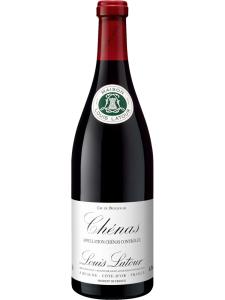Chenas is a small appellation for red wines produced in an area of northern Beaujolais that makes up one of the ten Beaujolais crus. It takes its name from the forests of oak trees (chênes in French) that once dotted the surrounding hillsides, an area that is now home to an ocean of Gamay vines. Chenas wines are among the heaviest in Beaujolais, and are known for their floral, earthy characters and ageability. Chenas, along with Moulin-a-Vent, is one of the most highly-regarded Beaujolais cru wines, and the best examples can be cellared for up to ten years.
The vineyards of Chenas can be found on the slopes of Mont Remont, sandwiched between the borders of Julienas and Moulin-a-Vent. The 700 acres (290ha) of vineyards in Chenas itself are split between the Rhone and Saone-et-Loire departments. Confusingly, the town of Chenas itself is located within the Moulin-a-Vent viticultural area due to changes in the appellation borders over time. As a result, only some vineyards located within the Chenas commune can be used in the production of Chenas wine.
© Daniel Gillet/InterBeaujolais
An official decree from King Philippe V in the early 14th Century saw the oak forests on the slopes of Mont Remont replaced with vines, and viticulture has been practiced in the area surrounding Chenas since. These early vineyards were developed by rich Lyonnais in the 15th Century, and were purportedly the favorite of King Louis VIII in the 18th Century. In modern days, Chenas has the smallest area planted to vine, and as such has the smallest viticultural output of all of the Beaujolais crus.
The coarse, sandy soils in the Chenas appellation are made up of weathered granite, and are highly compatible with the Gamay grape variety. On these low-fertility soils, the vines are forced to grow deep root systems into the ground in search of nutrients, and the rapid drainage afforded by the slopes lessens the water intake of the vines. As a result, small, concentrated berries with thick skins are produced, resulting in a more structured and age-worthy style of wine.
The continental climate in Chenas is marked by warm sunshine in summer that extends into the fall, and drying winds from the hills to the west of Beaujolais help to reduce the negative effects of rain during the growing season. Some cooling influences from the Mediterranean in the south make their way into the vineyards of Chenas, ensuring that ripening happens sufficiently slowly to preserve acidity in the grapes.
The majority of wines produced in Chenas are made entirely with the Gamay grape variety, but appellation laws permit the addition of some white wine into the blend: namely Chardonnay, Aligote and Melon de Bourgogne. Vignerons are only allowed to plant 15% of their vineyards with these white-wine varieties, effectively limiting the quantities permitted in the wines.


